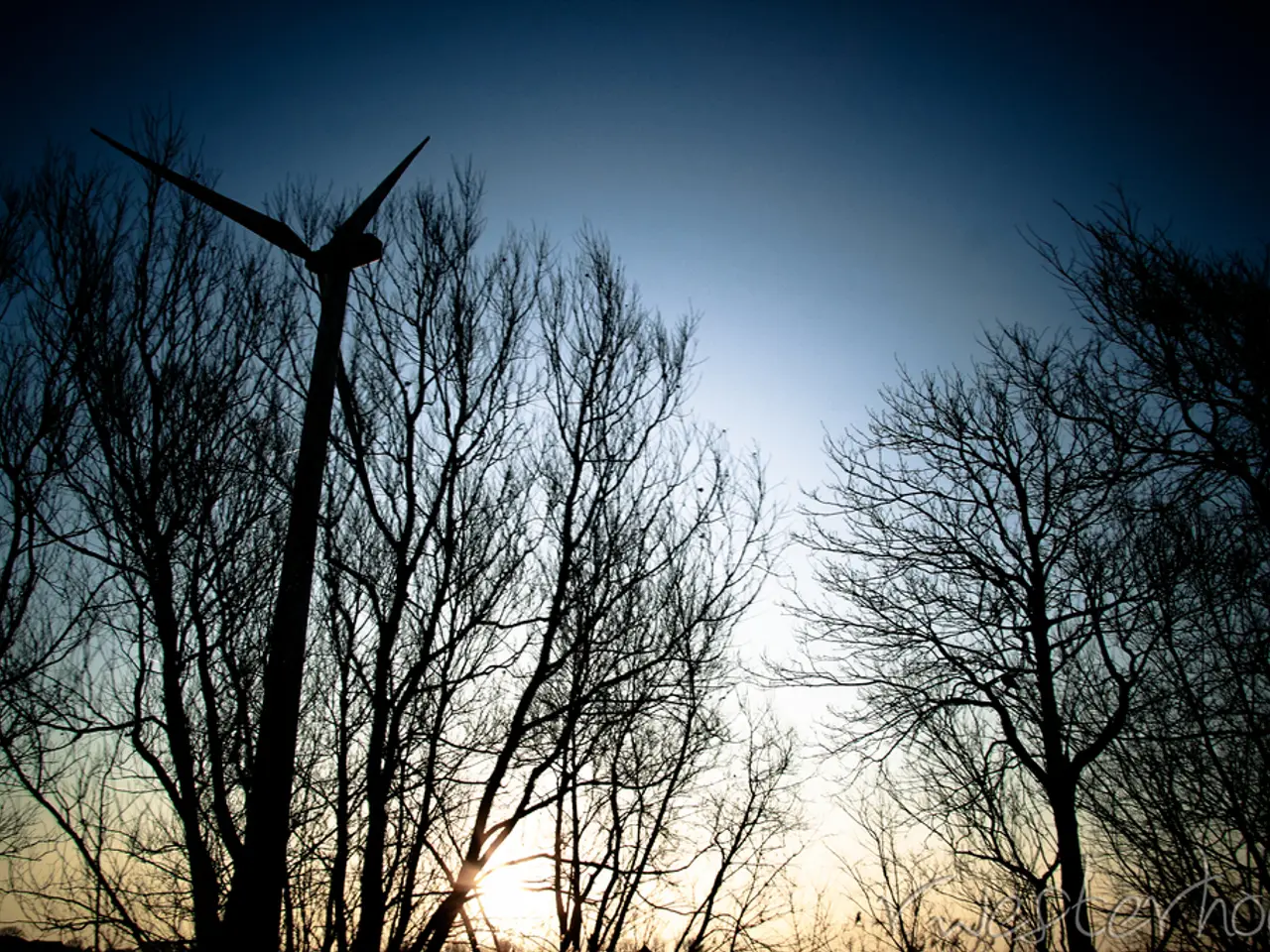Offshore wind energy projects in Germany face difficulties: financing retreats, specialists propose modifications
Germany's ambitious plans for offshore wind energy are facing challenges, with decreased investor interest threatening the green transformation of power supply. The decline in investor interest is primarily due to rising project and capital costs, volatile and unpredictable electricity markets, rigorous and risk-heavy auction design, and challenging site conditions.
Experts from Fraunhofer Institute predict that tightly packed wind parks on areas N10.1 and N10.2 will result in only 2722 to 2984 full-load hours annually, compared to 3300 to 4500 full-load hours in existing parks, due to high power density at sites reducing energy yields.
The tendering process itself has become a problem, with a point system intended to prevent abuse having a deterrent effect. The legal requirements for offshore wind parks are complex, contradictory, and dangerous, with operators facing a six-month deadline to deliver 95 percent of the performance after grid connection, or risk subsidy withdrawal, even in bad winter weather.
Industry representatives demand a radical reform of the auction design. They advocate for Contracts-for-Difference (CfD) to share price risks, as it could potentially reduce electricity costs by up to 30 percent. The offshore wind industry in Germany is pushing for a comprehensive reform of the Wind Energy at Sea Act (WindSeeG) and auction frameworks to ensure Germany meets its renewable capacity targets while attracting the necessary investments.
To address these problems, several reforms are being proposed. These include redesigning the tender and auction system to reduce costs and risk by introducing two-sided Contracts for Difference (CfDs) alongside Power Purchase Agreements (PPAs), providing more stable investment conditions. Other proposals include lowering permitted power density at offshore sites, prioritizing site designations based on location-specific energy yields, and introducing mechanisms to protect developers from risks outside their control.
Removing regulatory bottlenecks such as barriers to port expansion and modernization, and re-auctioning unsold sites under improved and more flexible regulations are also suggested to regain investor interest. The state is also urged to set incentives that encourage investment, rather than discourage it, as it is currently perceived to be doing.
The offshore wind sector is also grappling with complex legal framework conditions and risks in the acceptance of electricity. The so-called "apprentice criterion" favors large corporations with global training places, and companies criticize a mix of political risks and unclear market conditions, making it difficult to calculate electricity prices and supply chains years in advance.
The legal text is considered a bureaucracy monster, with paragraph 53 calculating to two decimal places according to DIN standard. The wind power industry finds investment in offshore wind parks unattractive due to these complex conditions and risks.
The CfD model, which has already been successful in Britain, is set to be implemented in Germany. This could potentially stabilise the investment environment and attract more investors to the sector. However, comprehensive reforms are needed to address the root causes of the current challenges and ensure the success of Germany's offshore wind energy ambitions.
- Experts from the Fraunhofer Institute suggest that high power density at offshore sites could reduce energy yields in new wind parks, with only 2722 to 2984 full-load hours annually compared to existing parks.
- Industry representatives call for a radical reform of the auction design, advocating for Contracts-for-Difference (CfD) to share price risks and potentially reduce electricity costs by up to 30 percent.
- The offshore wind industry in Germany is pushing for a comprehensive reform of the Wind Energy at Sea Act (WindSeeG) and auction frameworks to meet renewable capacity targets and attract necessary investments.
- To reduce costs and risk, reforms are being proposed, including redesigning the tender and auction system with two-sided Contracts for Difference (CfDs) and Power Purchase Agreements (PPAs), and lowering permitted power density at offshore sites.
- Regulatory bottlenecks such as barriers to port expansion and modernization, and re-auctioning unsold sites under improved and more flexible regulations are suggested to regain investor interest.
- The state is urged to set incentives that encourage investment rather than discourage it, and the implementation of the CfD model, successful in Britain, could stabilize the investment environment and attract more investors to the sector. However, comprehensive reforms are needed to ensure the success of Germany's offshore wind energy ambitions.




